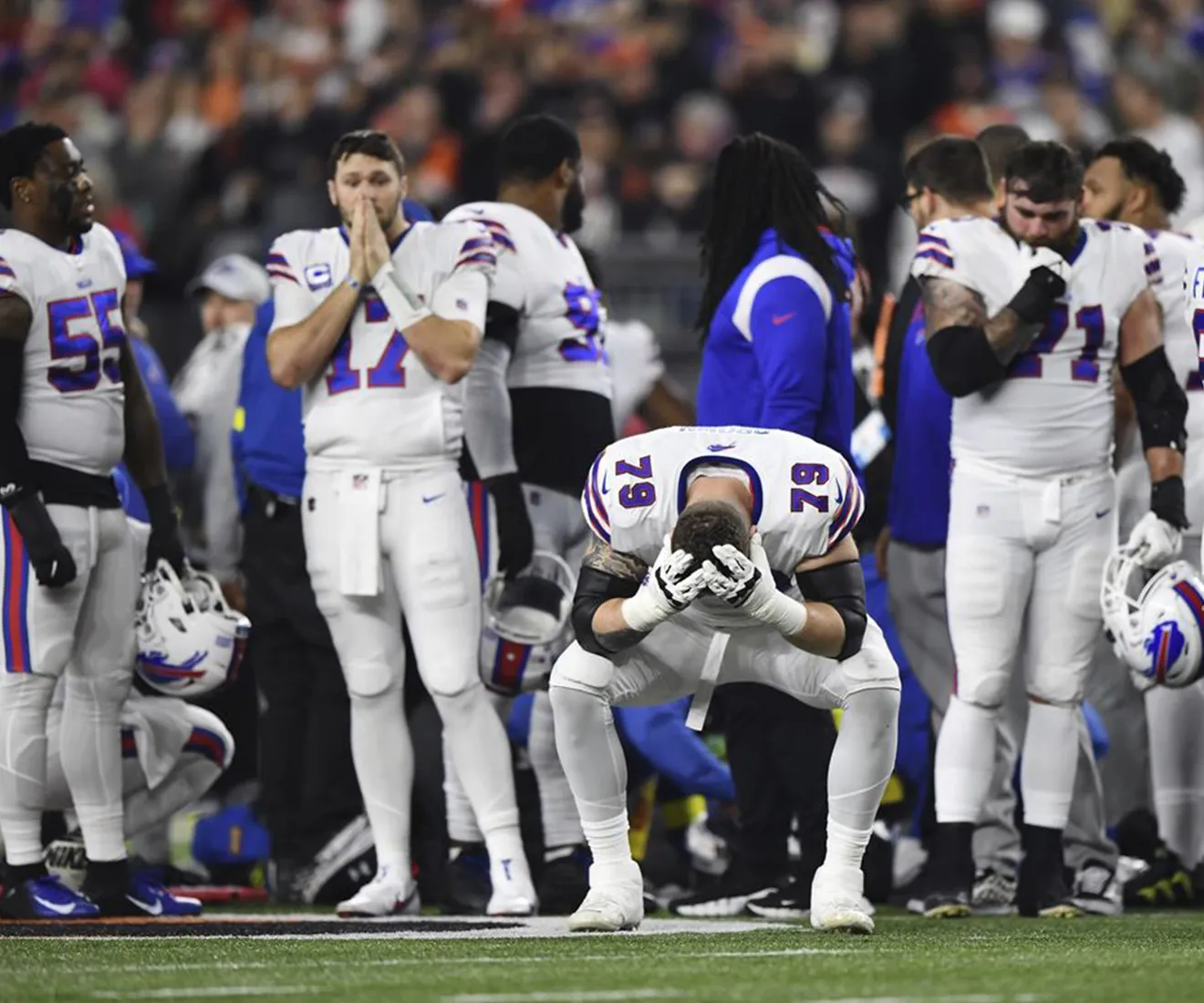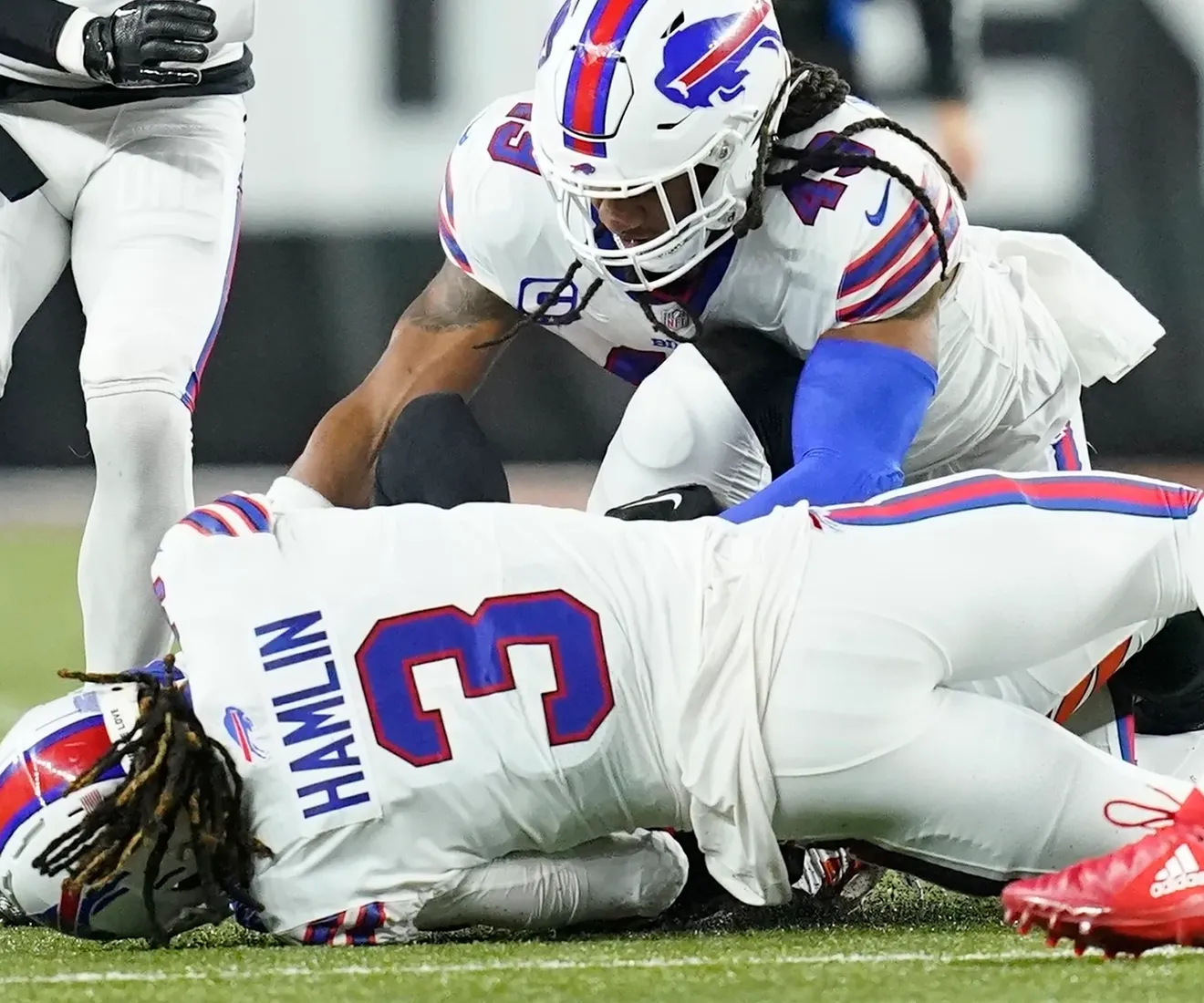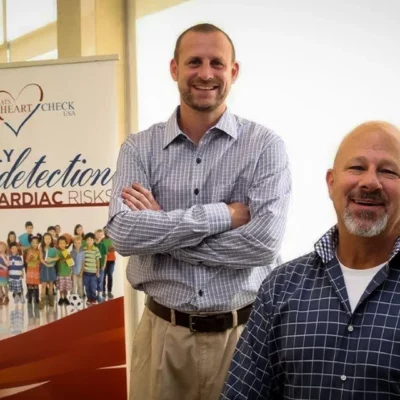Cardiac Arrest Awareness: Unveiling the Complexity of Preventive Measures”
On that fateful night, as Damar collapsed on the field, the Buffalo Bills’ Athletic Trainers delivered on-field CPR. The image of their rapid response and Damar’s journey towards recovery has left an indelible mark on the minds and hearts of everyone who witnessed it.
While we celebrate Damar’s remarkable progress in his recovery, we also acknowledge that there’s still a challenging road ahead before he can even consider returning to the playing field. This story is about courage, resilience, and the power of timely medical intervention—a story we can all draw inspiration from. Join us as we delve deeper into Damar Hamlin’s inspiring journey.

When a cardiac arrest unfolds in such a public manner, particularly involving a professional athlete, it prompts us to reflect on what can be done to prevent these life-threatening episodes. Indeed, there must be ways to test for underlying conditions that can lead to such incidents. Even HBO’s Real Sports has dedicated a segment to raising awareness about Sudden Cardiac Arrest (SCA).
“This event was life-changing, but it’s not the end of my story,” Hamlin said
Understanding Sudden Cardiac Arrest (SCA)
First and foremost, it’s crucial to recognize that SCA can affect anyone. While people with structural heart diseases or chronic illnesses face a higher risk of arrhythmias, young individuals are particularly vulnerable to sudden cardiac arrest due to specific conditions. According to Mayo Clinic’s website, some of the heart conditions that can lead to SCA include:
- Coronary Artery Disease
- Heart Attack
- Enlarged Heart (Cardiomyopathy)
- Heart Valve Disease
- Congenital Heart Defects
- Long QT Syndrome (LQTS)
- Wolff-Parkinson-White syndrome (WPW),
- + Other Heart Signaling Abnormalities

Efforts to Raise Awareness and Mandate Screening
In response to the tragic loss of young lives to SCA, numerous organizations have emerged, advocating for legislative changes to promote awareness and mandatory screening of all youth. While their goals are undoubtedly well-intentioned, the medical community remains divided over the efficacy of such testing methods.
The American Heart Association recommends athletes complete a 12-point questionnaire, while the International Olympic Committee advises a comprehensive approach, encompassing personal and family history, physical examinations, and 12-lead ECGs. These screenings occur at the outset of competitive activities and are repeated every two years.

Divergence in Screening Methods
Contrastingly, the screening protocols for National Football League players are notably rigorous, utilizing a battery of tests. This differs from the relatively widespread use of ECGs for high school and college athletes. While ECGs excel in diagnosing electrical abnormalities, they tend to be less effective at detecting structural heart abnormalities.
The Gold Standard: Echocardiograms
The gold standard in diagnosing structural heart issues is the echocardiogram or heart ultrasound. Professional sports teams extensively use this tool with ECGs and thorough family/personal history reviews.
Unraveling Commotio Cordis: What Is It?
Commotio cordis, derived from the Latin term for “agitation of the heart,” is a rare form of cardiac arrest triggered by a direct blow to the chest. This impact induces a potentially lethal heart rhythm disturbance, known as ventricular fibrillation.
Commotio cordis – a term that many may find unfamiliar, yet it’s a condition with the potential for grave consequences. Dr. Gordon F. Tomaselli, a distinguished expert in sudden cardiac death and heart rhythm disturbances, explains that commotio cordis is an intricate phenomenon where several elements must align perfectly, or tragically wrong, for it to occur. Dr. Tomaselli holds the esteemed positions of Marilyn and Stanley M. Katz Dean at the Albert Einstein College of Medicine in the Bronx, New York, and executive vice president and chief academic officer of Montefiore Medicine.
The Telltale Signs: What Commotio Cordis Looks Like
Dr. Barry J. Maron, a renowned cardiologist, witnessed the event in real-time during Damar Hamlin’s incident. He recounts a seemingly routine blow to the chest, followed by Hamlin staggering and collapsing. This is the hallmark of a commotio cordis event. Dr. Maron, who has conducted extensive research on this condition, emphasizes that, following a chest blow, a person can tolerate the ensuing arrhythmia for a few seconds before collapsing. He shares a memorable case where a second baseman, after being struck by a line drive to the chest, had just enough time to retrieve the ball, throw out a runner, and then collapse – ultimately losing his life.
The Rarity of Commotio Cordis
Measuring the prevalence of commotio cordis is challenging. While Dr. Maron initiated the U.S. Commotio Cordis Registry in 1995, reporting cases remains voluntary, making it difficult to establish exact figures. A recent scientific review published in JACC: Clinical Electrophysiology identified only 334 cases dating back to 1980, underscoring the rarity of this condition.
Vulnerable Groups: Who Is Most At Risk?
Statistics from the recent scientific review reveal that 94% of commotio cordis victims are male, with an average age of 19. Nearly two-thirds of cases are associated with sports, often involving projectiles like baseballs or softballs. Beyond sports, cases include assaults and motor vehicle accidents. The vulnerability of younger individuals stems from the less-developed and more flexible chest structures, coupled with their active participation in sports. Crucially, most commotio cordis cases occur in individuals without underlying heart disease.
The Delicate Balance: Factors Contributing to Commotio Cordis
Three crucial factors must align for commotio cordis to occur. The blow must target the heart, take place at a precise moment within the cardiac cycle (typically between 20 and 40 milliseconds), and it must be neither too intense nor too soft. This delicate balance makes commotio cordis an unpredictable occurrence.
The Power of Prompt Response
While preventing commotio cordis can be challenging due to its unpredictable nature, being prepared to respond effectively is key. Dr. Maron’s research, supported by a 2015 statement from the AHA and the American College of Cardiology, underscores the significance of rapid, trained responses. Survival rates have increased over the years, approaching nearly 60% by 2012, thanks to individuals equipped to recognize cardiac arrest, perform CPR, and have automated external defibrillators (AEDs) readily available.
The Path to Recovery: Damar Hamlin’s Case
Damar Hamlin’s remarkable recovery stems from a well-coordinated chain of survival. On January 2, emergency medical personnel were activated immediately, CPR was initiated, and a defibrillator was employed. Dr. Tomaselli emphasizes that prompt and effective responses are essential in such cases, especially when there is no underlying heart condition. Those who experience commotio cordis, in these circumstances, can often return to their regular activities.
Commotio cordis may be rare, but understanding its intricacies and the importance of quick responses can make all the difference. In this journey through commotio cordis, we aim to raise awareness about this condition, empowering individuals with the knowledge and readiness to respond swiftly when it matters most.





